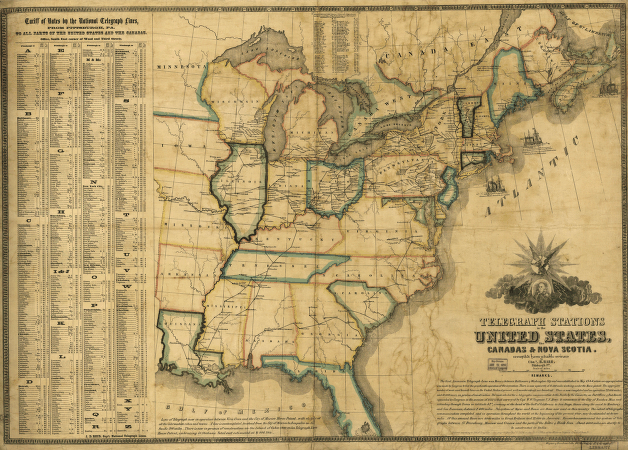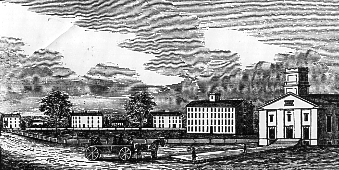
Telegraph
stations in the United States, the Canadas & Nova Scotia (1853)
Source:
Library of Congress
|
Illustration in Robert H. Thurston, A History of the
Growth of the Steam-Engine (N.Y.: D. Appleton, 1878) |
Mon., Oct. 26 New Frontiers, New Markets |
|
Wed., Oct. 28 Discussion: Gender Roles in the Early Republic
|
|
|
Fri., Oct. 30 The Battles of Jacksonian Democracy
|
Robert Cruikshank, President's Levee,
or all Creation going to the White House (London : Saunders and Otley,
1841)
|
|
Mon., Nov. 2 The Second Great Awakening and Social Reform  |
Lyman Beecher |
Charles Grandison Finney |
|
Wed.,
Nov. 4 Discussion: Early Oberlin
|
||
|
Old Slater Mill, Pawucket, R.I. |
Boott Cotton Mills, Lowell, Mass. |
|
Fri., Nov. 6 Launching the Industrial Revolution
|
|
|
Mon., Nov. 9 The South: A Separate Civilization? |
|
|
|
John Greenleaf Whittier, "Our Countrymen in Chains" (New
York: Anti-Slavery Office, 1837)
|
|
Wed.,
Nov. 11 Discussion: The Slave Experience
|
Frederick Douglass |
|
Fri., Nov. 13 Radical Impulses: Abolitionism and Feminism |
|